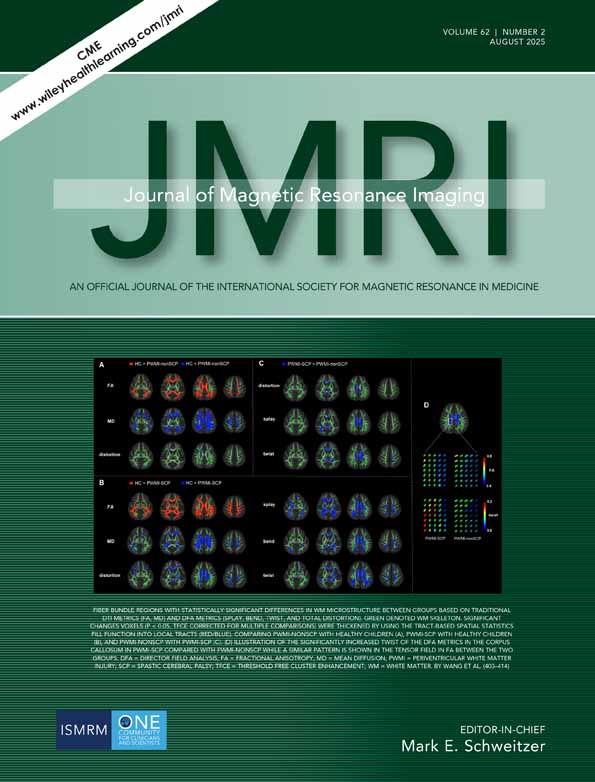Quantification of the Proton Density Fat Fraction and Iron Content: A Comparative Study Between 3.0 T and 5.0 T MRI
Funding: This work was supported by National Natural Science Foundation of China (Grant 82171927), the Beijing Natural Science Foundation (Grant 7212126), and the Beijing New Health Industry Development Foundation (Grant XM2020-02-006).
Yali Li, Dan Jin, and Suwei Liu contributed equally to this work.
ABSTRACT
Background
Proton density fat fraction (PDFF) and R2* are noninvasive MRI biomarkers for quantifying fat and iron in abdominal organs. While 3.0 T MRI is widely used clinically, 5.0 T may offer improved accuracy and reliability. With the increasing availability of 5.0 T, assessing its feasibility and utility for quantifying PDFF and R2* in abdominal organs is needed.
Purpose
To determine the agreement of the PDFF and R2* in the liver, pancreas, kidney, and paraspinal muscle at 2 different field strengths.
Study Type
Prospective.
Population
A total of 127 participants, including 60 healthy volunteers and 67 with metabolic dysfunction-associated steatotic liver disease (100 women and 27 men, 52 ± 9 years old).
Field Strength/Sequence
3.0 T and 5.0 T; Chemical shift-encoded multi-echo gradient echo sequence.
Assessment
PDFF and R2* values in the liver, pancreas, kidney, and paraspinal muscle were measured by three observers to evaluate the interobserver and interfield agreement using two 3.0 T scanners (scanner 1 and scanner 2) and one 5.0 T scanner.
Statistical Tests
Linear regression, Bland–Altman analyses, and intraclass correlation coefficients (ICCs). The p-value < 0.05 indicated statistically significant.
Results
PDFF and R2* at 5.0 T were strongly correlated with those at two 3.0 T scanners for all organs (R 2 = 0.905–0.998 for PDFF; 0.831–0.991 for R2*), indicating high interfield ICCs (0.892–0.993 for PDFF; 0.910–0.981 for R2*). Comparisons between 5.0 T and two 3.0 T scanners showed good interfield agreement for PDFF (mean bias, −0.57% to 0.03%) while a higher bias for R2* (mean bias, −16.53 to −2.64 s−1, 95% LoA, −34.28 to 1.21 s−1) at 5.0 T compared to the comparison between 3T scanners.
Data Conclusion
5.0 T revealed high interfield agreement between the PDFF and R2* with 3.0 T, which could provide reliable quantification of fat and iron contents in abdominal organs.
Evidence Level
2.
Technical Efficacy
Stage 2.




